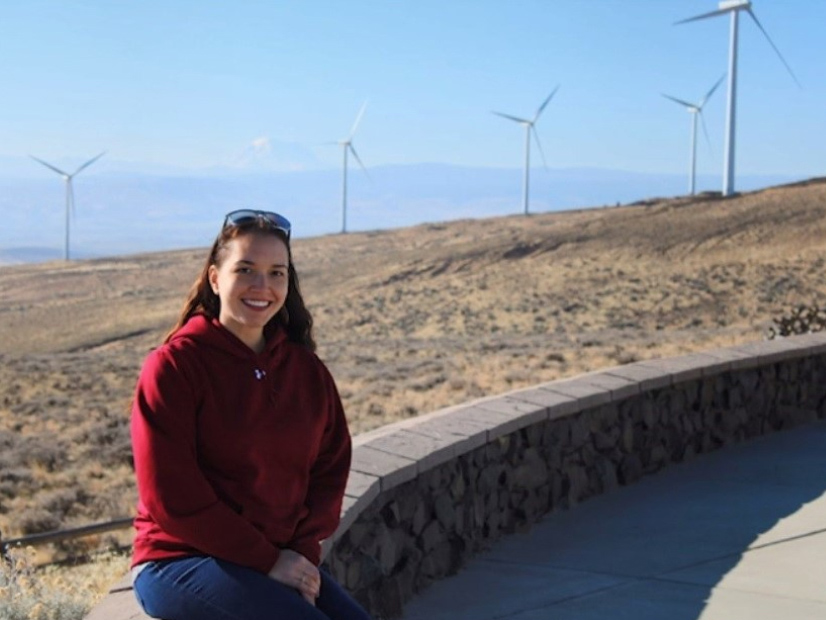The Pennsylvania State University Wind Energy Club won first place in the U.S. Department of Energy’s Collegiate Wind Competition on Friday.
Thirteen teams competed in contests for turbine design, wind farm development and community outreach, while working to adapt to the pandemic virtually and in-person after restrictions were lifted.
“This year has been particularly challenging and disruptive, but I do hope that in some way that that even added a little more depth and dimension to the experience that you got this year,” Alejandro Moreno, deputy assistant secretary for renewable power for the Office of Energy Efficiency and Renewable Energy, told teams during the award ceremony held virtually this year.
DOE launched the wind competition in 2014 to give students practical experience in wind energy disciplines and encourage entry into the industry’s workforce.
“We need you to bring everything that you have learned to the big wind competition, which is, of course, helping us to solve the climate crisis,” Energy Secretary Jennifer Granholm said in an opening message. “After you’ve celebrated … I want you to think about what your favorite part of this competition was because maybe it was building the turbines or maybe it was developing the plans or doing outreach to local communities; whatever it is, know that there is a career out there with your name on it.”
The Johns Hopkins University team won second place overall, and the California Polytechnic State University team won third. (See Students ‘Double Down’ on Efficiency with Wind Turbine Prototype.)
DOE also named winners in each of the three individual contests. Penn State won the wind farm project development contest; Kansas State University won the turbine prototype contest; and Virginia Tech won the community outreach contest, which was new this year.
Faculty members at the teams’ schools recognized outstanding students for their work during the competition with unofficial awards.
Alyssa Gorrell from Washington State University Everett, for example, received the Recruiter Award for organizing a trip to a wind farm and helping give talks on wind energy for ecology classes. And Trey Gloeckler from Texas Tech University received the Energy Bunny Award for bringing energy to his team when it needed a boost.
Impressing the Judges
All the teams presented their submissions virtually to a panel of judges over six days starting June 2.
The students impressed judge Toby Butterfield, director of development at Primergy Solar, with their understanding of the wind farm project development process. They showed how working as a team is key to a successful project.
“You can’t just have people who are narrowly focused on finance and separate people who are narrowly focused on site design and engineering, and other people who are narrowly focused on energy assessment,” he said. “You really need all of them working together in concert.”
In the community outreach contest, the students’ ability to engage despite social distancing guidelines inspired the judges, according to judge Lynn Abramson, president of the Clean Energy Business Network.
The outreach portion of the competition challenged students to build connections with industry members and local communities and media.
Several teams brought communications or marketing majors on board to help with their outreach, according to Abramson.
“By diversifying their team’s expertise, they were able to create very professional looking social media and websites,” she said. “We really appreciated the teams who presented metrics of their efforts, such as their social media engagement posts, event surveys or the number of students recruited or engaged.”
The students’ ability to create a working wind turbine in the prototype contest in a short time frame was laudable, according to judge Srinivas Guntur, engineering manager of aerodynamic technology at Siemens Gamesa.
And the turbine testing, which could not always be done in a proper wind tunnel, showed real innovation, he said.“You just decided to create your own rigs and started testing it by putting turbines on top of SUVs or cars, and one of the teams even put it on a VW bus,” he said, adding that he wished he could award extra style points for the students’ creativity.
2022 Competition
Penn State has won the competition four other times since 2014 and will have an opportunity to defend the title next year.
DOE named 10 teams for the 2022 Collegiate Wind Competition, which will take place next May.
The teams are:
-
-
- Brigham Young University
- California State University Maritime Academy
- James Madison University
- Johns Hopkins
- Kansas State
- Northern Arizona University
- Texas Tech
- Penn State
- Virginia Tech
- University of Wisconsin-Madison
- WSU Everett
-


